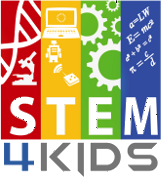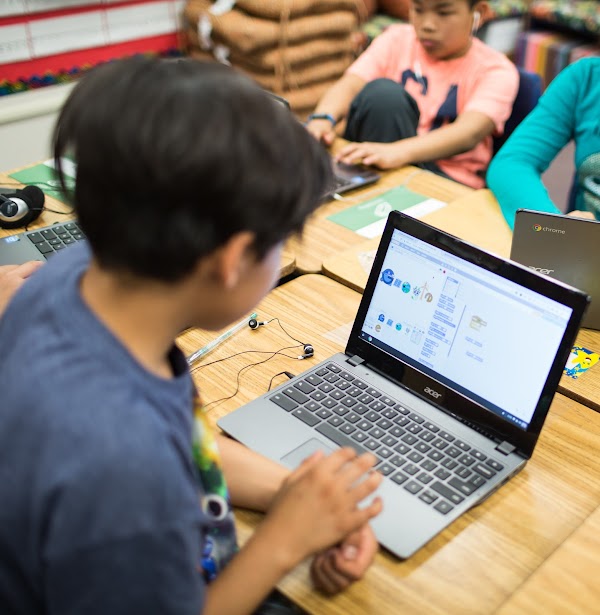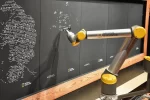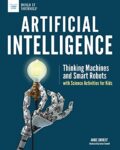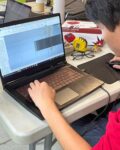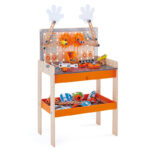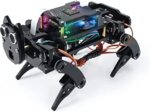Robotics is a fascinating field that combines computer science, engineering, and mechanics to create machines that can perform tasks automatically. In this article, we will provide an introduction to building and programming robots for beginners. We’ll also share resources like robot-building kits and tutorials on how to program robots.
What is Robotics?
Robotics is the study of robots, which are machines that can perform tasks automatically or with some degree of autonomy. Robots can be programmed to perform repetitive or dangerous tasks, or to complete tasks that are too complex for humans to perform. Robotics combines many different fields of study, including computer science, electrical engineering, mechanical engineering, and mathematics. Robotics has many applications in our daily lives, from manufacturing and transportation to healthcare and entertainment. For example, robots can be used to assemble cars, clean floors, perform surgeries, or even play games.
If you are interested in having your younger kids learn about robotics, one of the best ways to get started is by building your own robot. There are many robot-building kits available that are designed for beginners and come with all the necessary components and instructions.
Robot-Building Kits
There are also many robot kits available for younger kids that are designed to be easy to use and fun to learn. Here are a few examples of robot kits for younger kids:
- LEGO Boost: LEGO Boost is a robot kit designed for kids ages 7 and up. This kit combines LEGO building with coding to create five different models that can be programmed to move and interact. The kit comes with a LEGO Move Hub, which serves as the programmable brain of the robot.
- Sphero Mini: Sphero Mini is a small and fun robot designed for kids ages 8 and up. The robot can be controlled using a smartphone app and comes with a range of accessories for creative play. This small, app-enabled robotic ball can be programmed using the Sphero Edu app to drive, play games, and learn coding.
- Dash by Wonder Workshop: Dash is a cute and friendly robot designed for kids ages 6 and up. The robot come with a range of sensors, accessories, and programming tools that allow kids to explore coding, robotics, and creative problem-solving. This robot is designed to teach coding through play, with a variety of coding challenges and games to keep kids engaged. Highly recommended.
- Botley by Learning Resources: Botley is a small and versatile coding robot designed for kids ages 5 and up. Botley is a screen-free coding robot that allows children to learn coding concepts through play. Botley comes with a remote control as well as a set of coding cards that can be used to create simple programs without the remote control.
These are just a few examples of robot kits for younger kids. There are many other kits and projects available online that can help kids learn about robotics, coding, and STEAM concepts in a fun and engaging way.
Programming Robots
Once you have built your robot, the next step is to program it. Programming a robot involves writing a set of instructions that tell the robot what to do.
Here is an overview of some of the programming options available for the robot kits I mentioned earlier:
- LEGO Boost: LEGO Boost can be programmed using the LEGO Boost app, which is available for iOS and Android devices. The app includes a block-based programming language that is designed for kids, as well as building instructions and activities for five different robots.
- Sphero Mini: Sphero Mini can be programmed using the Sphero Edu app, which is available for iOS, Android, and Chromebooks. The app includes a block-based programming language that is designed for kids, as well as more advanced programming options for older students. The app also includes a range of activities and challenges that allow kids to explore coding, robotics, and creative play.
- Dash by Wonder Workshop: Dash can be programmed using the Wonder Workshop app. The app includes block-based programming languages that are designed for kids, as well as more advanced programming options for older students. The apps also include a range of activities and challenges that allow kids to explore coding, robotics, and creative problem-solving.
- Botley 2.0 The Coding Robot: Kids as young as 5 can start coding in minutes with 100% screen-free adventures. Your little coders can build coding sequences of up to 150 steps, to move, turn, detect objects, and follow paths using a variety of coding commands.
The Next Level
As kids progress with their robotics journey, the options open up and we’re able to leverage much more options in both hardware and software.
- One popular robot-building kit is the LEGO Mindstorms kit, which allows you to build your own robot using LEGO block. The kit includes motors, sensors, and a programmable brick that serves as the brain of the robot. The FIRST Robotics Program standardized on these kits with a program targeting kids from age 9 to 16.
- Another option is the VEX Robotics kit, which allows you to build and program your own robot using metal parts. These bots are programmed using a language called RobotC. The kit includes motors, sensors, and a microcontroller that serves as the brain of the robot.
- The Raspberry Pi is another popular single-board computer that is widely used in robotics, electronics, and programming projects. These kits are based on open source hardware and can be programmed with a wide array of open source software as well. More information can found in this post: Learn Robotics with Low-cost Raspberry Pi And Python
Intermediate to Advanced Programming
For the robot kits that use Raspberry Pi as the brain, programming options can vary depending on the programming language and software used. Python is a popular programming language for robotics and can be used to program robots using Raspberry Pi. Other programming options may include Scratch, JavaScript, and C++. Many of the robot kit manufacturers provide instructions and tutorials on how to program their robots using these languages. Many of the programming options for robot kits are open source, which means that the source code is freely available and can be modified and distributed by anyone. Here are some examples of open source programming options for some next level robot kits:
- Scratch: Scratch is a block-based programming language developed by the MIT Media Lab. Scratch is open source and can be used to program a wide range of robots and other devices. Scratch is easy to learn and is a great option for kids who are new to programming. Scratch is a visual programming language that is designed for beginners and allows you to drag and drop blocks of code to create programs.
- RobotC is a text-based programming language that is more advanced and allows you to write programs using code.
- Python: Python is a popular programming language that is widely used in robotics and other areas of computer science. Python is open source and is supported by a large community of developers. Python can be used to program robots using Raspberry Pi or other microcontrollers.
- Arduino: Arduino is an open source platform for building electronics projects, including robots. Arduino provides a range of software tools, including an integrated development environment (IDE) and a programming language based on C++. Arduino is popular among makers and hobbyists due to its flexibility and ease of use.
- ROS: ROS (Robot Operating System) is an open source framework for building robotics software. ROS provides a range of tools and libraries for programming robots, including support for multiple programming languages, real-time control, and advanced algorithms for navigation and perception.
These are just a few examples of open source programming options for robot kits. There are many other open source tools and libraries available for programming robots, and new ones are being developed all the time.
There are many tutorials and resources available online that can help you learn how to program robots. For example, the Carnegie Mellon Robotics Academy offers online courses and tutorials on programming LEGO Mindstorms and VEX Robotics kits. We will link to more educational resources in the near future.
Conclusion
Robotics is a fascinating field that offers endless possibilities for learning and exploration. By building and programming your own robot, you can gain a deeper understanding of how robots work and develop valuable skills in computer science and engineering. With the resources and tools available today, anyone can learn about robotics and start building their own robots. We hope this introduction to building and programming robots for beginners has helped in some way.
Please leave a comment below:
